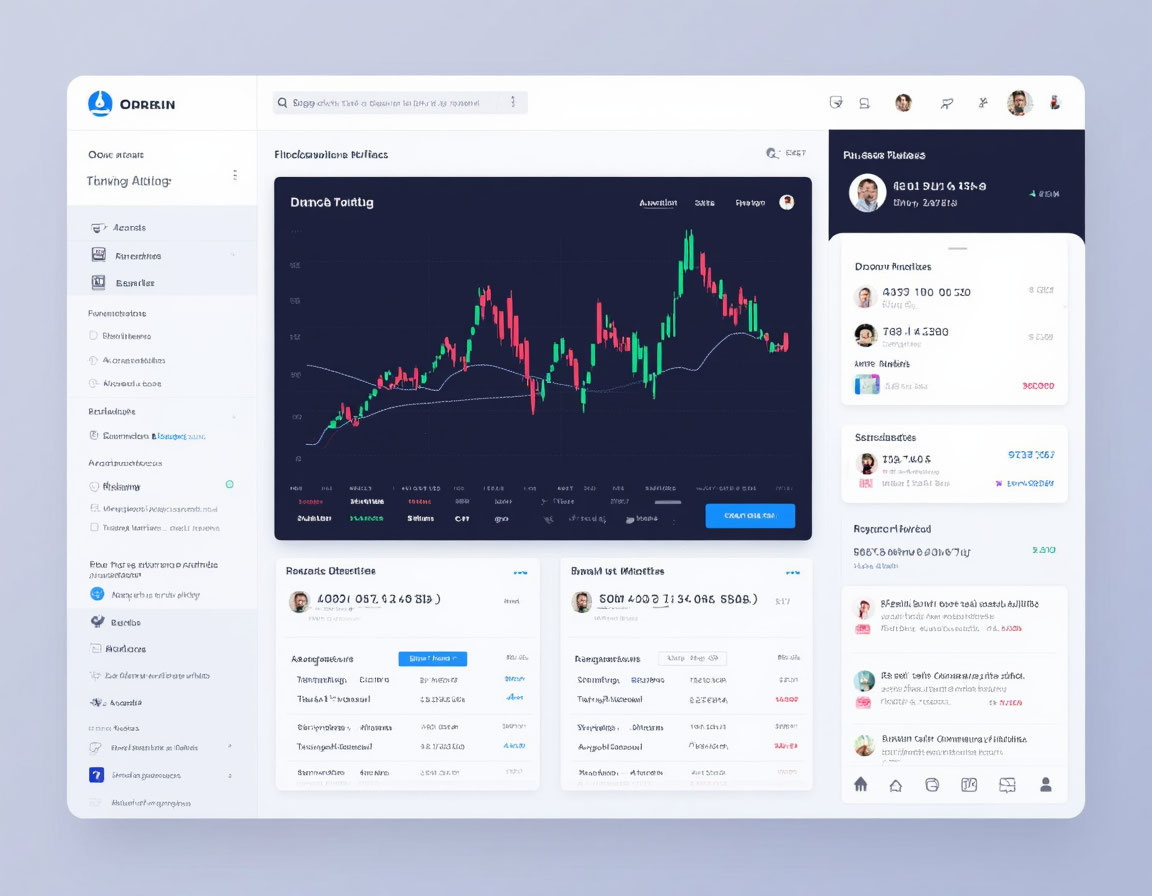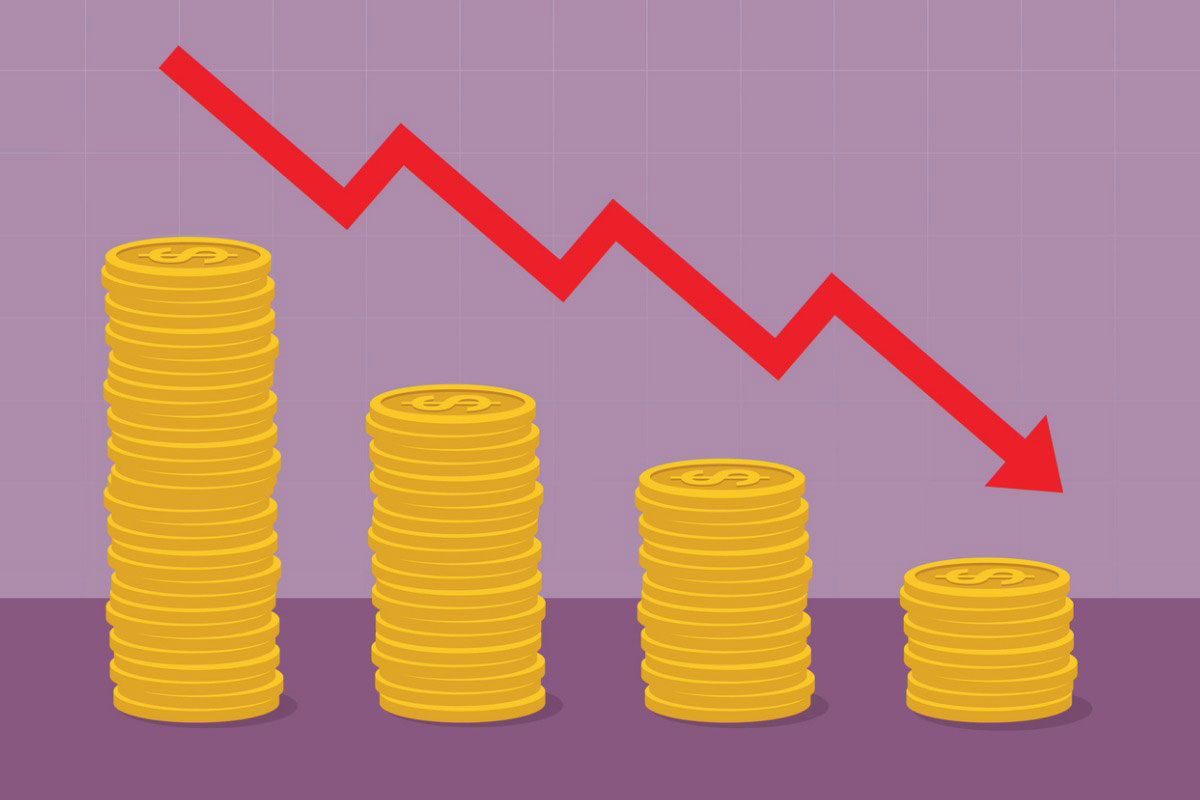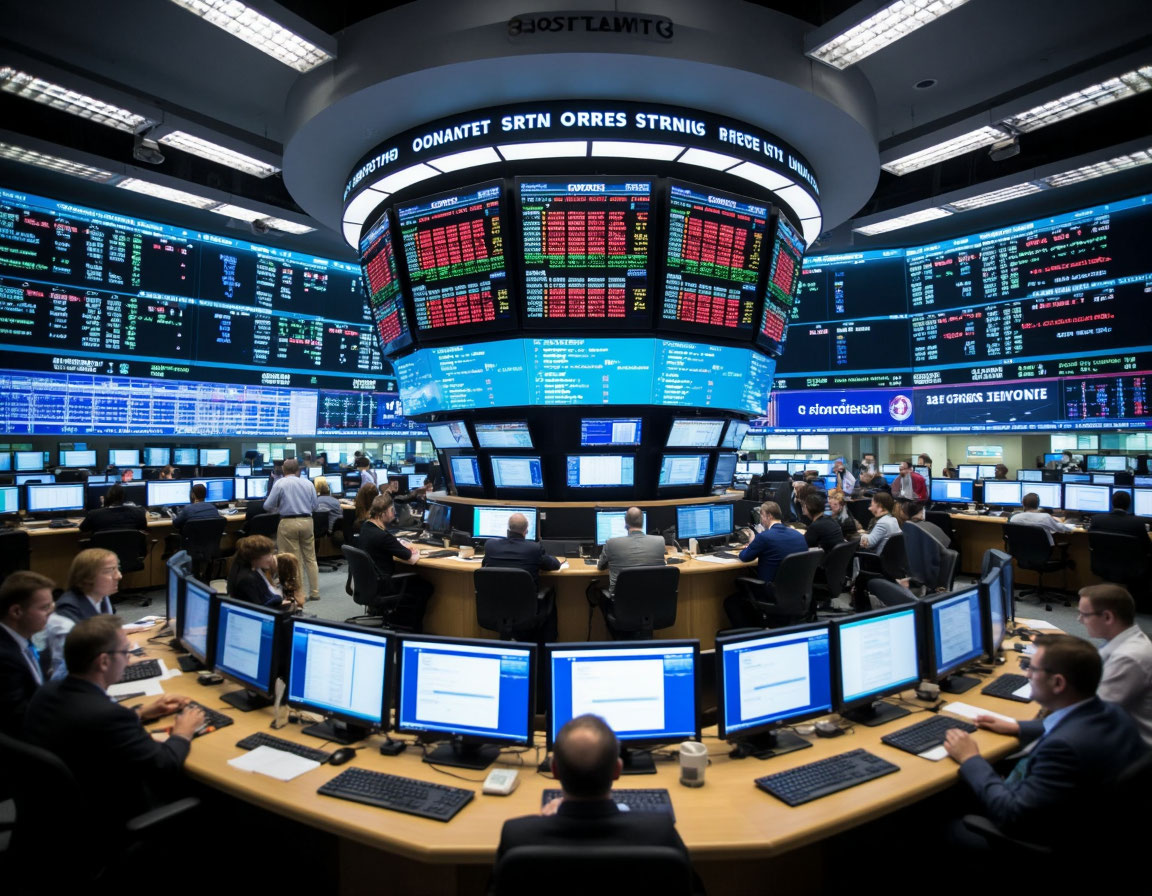In the world of financial markets, trade execution happens through specific instructions. These tools are a fundamental component of any trading strategy, allowing market participants to open and close positions with pre-defined parameters. Understanding their mechanism is critical for achieving success in exchange activities. This material comprehensively covers the types, features, and application strategies of various kinds of commands.
The Essence of a Trading Instruction
A trading instruction represents a command given by a trader to a broker or trading platform to buy or sell a specific financial instrument. It is the primary method of interaction between a market participant and the exchange system. Without this mechanism, executing any operations would be impossible.
Each such command contains several key parameters, including the asset name, the direction of the operation (buy or sell), volume, and execution conditions. Depending on the chosen type, the transaction can be executed immediately at the current price or in the future when the market reaches specified conditions.
Modern electronic trading terminals provide a wide range of such tools, allowing experienced market players to implement complex strategies and manage risks effectively. Proper use of this functionality separates professionals from novices.
It is important to note that sending a command does not guarantee its immediate execution. The fact of fulfillment depends on the instruction type, the current market situation, and the liquidity of the chosen asset. Understanding these nuances helps to avoid many common mistakes.
Main Categories of Exchange Instructions
All existing types of trading commands can be divided into two broad categories: those executed immediately at the current price and pending ones, which are activated only when certain conditions are met. Each of these categories serves specific trading purposes and is suitable for different market situations.
Immediate instructions, often called market orders, are used when it is necessary to enter or exit a trade as quickly as possible, without waiting for price changes. Their key advantage is the high probability of fast execution, although the price may differ from the expected one at the moment of placing the command.
Pending tools, on the contrary, allow setting the exact price at which the transaction should occur. This makes it possible to open positions on more favorable terms than the current market ones. This category includes limit, stop, and take-profit orders.
A separate group consists of complex types, such as the trailing stop, which automatically moves following the changing price, locking in profit. The choice of a specific type depends on the trading plan, investment horizon, and the applied money management strategy.
Market Instruction
A market order is a command for immediate execution at the best available price at the current moment. This type is used when the priority is the speed of the operation, not the exact price. A transaction using this command is completed almost instantly if there is sufficient liquidity in the market.
The main advantage of this approach is guaranteed execution. Unlike pending types, a market order will not be rejected by the system due to failure to reach a price level. This is especially important in situations where it is urgent to open or close a position, for example, during the release of important news.
The main disadvantage is the risk of slippage – a phenomenon where the actual execution price differs from the expected one at the moment of sending. This happens due to high volatility or low asset liquidity. The amount of slippage can be either insignificant or substantial.
Market orders are recommended for highly liquid assets, where the difference between the bid and ask price is minimal. They are also effective for quickly exiting the market during a trend reversal or realizing profit upon reaching the target level.
Limited Instruction
A limit order is a command to buy or sell an asset at a specified price or better. Unlike a market order, this type allows a trading participant to set the exact price level at which they are willing to make a transaction. Execution occurs only when the market reaches the specified price.
The main advantage of a limit order is control over the execution price. The trader knows in advance at what cost the asset will be bought or sold. This helps to avoid unpleasant surprises like slippage and to trade strictly according to a pre-developed plan.
The disadvantage of this method is the lack of execution guarantee. If the market does not reach the specified price level, the transaction will not take place. This can lead to missed opportunities, especially when trading in a sideways trend or with low-volatility instruments.
Limit orders are particularly effective when trading at support and resistance levels, where a price reversal is expected. They are also useful for large players who want to accumulate or distribute a large position without significantly affecting the market price.
Stop Order
A stop order is a pending command that converts into a market order when the price reaches a certain level. This tool is primarily used to limit losses on an already open position, hence it is often called a stop-loss. When set correctly, it allows minimizing financial losses in case of adverse market movement.
The mechanism of a stop order is simple: the trader sets a price level upon reaching which the position should be automatically closed. Once the price touches this level, the system sends a market order to close. This protects the deposit from significant drawdowns during sharp movements against the open position.
Besides limiting losses, stop orders can be used to open positions when key levels are breached. In this case, they are placed above resistance for buying or below support for selling. This approach allows entering the market at the beginning of a new trend.
An important nuance is the phenomenon of slippage, which can significantly increase the actual loss during sharp movements and low liquidity. To minimize this risk, some platforms offer stop-limit orders, which close the position at a specific price but do not guarantee execution.
Profit Fixation Order
A take-profit is a pending instruction designed to automatically lock in profit when the price reaches the target level. This tool allows closing a position with a pre-determined profit without constant market monitoring. It is an integral part of competent money management.
When setting a take-profit, the trader determines the price at which the deal is considered successful and should be closed. Once the market reaches this level, the system automatically executes the command to close the position. This allows securing profit before a possible price reversal.
The main advantage of this method is a disciplined approach to trading. Many market participants tend to close profitable positions prematurely due to greed or fear of losing already earned money. Automatic profit fixation eliminates the emotional component from the decision-making process.
The take-profit level is usually set based on technical analysis – at important resistance levels for long positions or support levels for short ones. The ratio between take-profit and stop-loss defines the risk profile of the trade and is a key parameter of any trading strategy.
Dynamic Stop Order
A trailing stop is an advanced type of stop order that automatically moves following the price movement in a favorable direction, locking in part of the profit. Unlike a static stop-loss, this tool allows staying in a trend for as long as possible while simultaneously protecting accumulated income.
The trailing stop mechanism is based on a certain distance from the price extremes. This distance can be expressed as a fixed number of pips or a percentage of the current asset value. When the price moves into the profit zone, the stop level moves accordingly, maintaining the set distance.
The main advantage of this method is the ability to maximize profit in trending movements without constantly manually moving the stop order. The system automatically adapts to changing market conditions, protecting more and more profit as the trend develops.
The trailing stop is especially effective in strong trending movements when the price moves in one direction for a prolonged period. It allows capturing a significant part of the movement without succumbing to premature profit fixation. However, in a ranging market, this tool can lead to frequent premature exits from positions.
Flow of Exchange Instructions
Order flow is an analysis method based on studying open limit orders in the market depth. This approach allows assessing the current balance of supply and demand, identifying significant price levels, and potential reversal points. Information about the order flow is a valuable source of data for making trading decisions.
The market depth window displays all active limit orders for buying and selling, indicating volumes and price levels. Large clusters of orders at certain prices form significant support and resistance levels. Breaking these levels is often accompanied by trend strengthening.
Flow analysis allows identifying the actions of large market participants, who often leave “footprints” in the form of large limit orders. Tracking changes in these orders helps predict future price movement. For example, rapid absorption of large buy orders may signal the start of an upward movement.
Modern trading platforms provide advanced tools for visualizing and analyzing order flow. Professional traders use this information to confirm trading signals generated by technical analysis and to find optimal entry and exit points from the market.
Concept of Order Clusters
An order block is a large transaction that was executed outside the market depth, often through over-the-counter systems or dark pools. Such transactions are usually initiated by institutional players wishing to buy or sell a large volume of an asset without significantly affecting the market price. Detecting these blocks can provide valuable information about the actions of “smart money.”
Order blocks are formed when a large market participant places an order whose size exceeds the current limit volume in the market depth. To avoid moving the market, such a transaction goes through special mechanisms without appearing in the public order book. However, the fact of its execution is recorded in the tape.
Analysts specializing in tape reading can identify these blocks by non-standard volume and execution time. Cluster charts and special indicators help visualize volume distribution by price, highlighting abnormally large trades that may indicate institutional player actions.
Detecting a series of buy blocks in an uptrend can confirm the strength of the movement, while the appearance of sell blocks at peaks may signal distribution and an imminent reversal. This analysis method is especially popular among intraday traders working in futures and stock markets.
Methods for Identifying Order Clusters
Detecting order blocks requires the use of specialized software and analytical skills. Most retail trading platforms do not display this information in their standard configuration, so traders have to resort to additional tools for analyzing market data.
Specialized platforms like Sierra Chart, Quantower, or Bookmap provide advanced capabilities for visualizing order flow and trades. They display not only the current market depth but also historical data on executed trades, highlighting abnormally large volumes that may represent blocks.
Cluster analysis is one of the most popular methods for identifying significant clusters. Cluster charts show the distribution of trading volumes by price and time, allowing visual identification of levels where large trade concentrations occurred. These levels often act as strong support or resistance.
When analyzing blocks, it is important to consider the context of the market situation. Blocks appearing after a prolonged downward movement may indicate accumulation, while blocks at peaks of an uptrend often signal distribution. Combining this method with traditional technical analysis improves forecast accuracy.
Trading Instruction Volume
Order volume is a quantitative characteristic that determines the number of lots or contracts of a financial instrument traded in a single transaction. This parameter has crucial importance for risk management and determining position size. Correctly determining volume is a key element of professional exchange activity.
Depending on the market type, volume can be expressed in various units: lots for Forex, contracts for futures, shares for the stock market. The size of a standard lot or contract varies depending on the instrument’s specifications. Understanding these features is necessary for accurately calculating potential profits and losses.
Managing position volume is directly related to risk management. Most professional traders recommend risking no more than 1-2% of the deposit per trade. Based on this rule, the maximum allowable position size is determined, taking into account the distance to the stop order.
Volume also affects trade execution, especially when working with large positions on low-liquidity instruments. A large volume can lead to significant slippage, so experienced market participants often split large orders into several smaller ones or use algorithmic execution to minimize market impact.
Answers to Common Questions
What is the main difference between a limit and a stop order?
A limit order is executed at the specified price or better, while a stop order is activated only when the price reaches a certain level, after which it is executed as a market order. Limit commands are used for entry at a favorable price, while stop orders are for limiting losses or entering on a breakout of levels.
Is it possible to modify or cancel an already placed instruction?
Most pending orders can be modified or canceled at any time before their execution. This allows adapting the trading strategy to changing market conditions. However, market orders, once sent, cannot be canceled as they are executed almost instantly.
What is partial execution?
Partial execution occurs when an order is filled not by a single transaction but by several trades at different prices. This often happens with large orders in low-liquidity markets when there is insufficient volume at the best price for full order execution.
Are all order types available in every trading platform?
Basic types, such as market and limit orders, are available in almost all platforms. However, more complex types, such as trailing stops or conditional orders, may not be supported by all brokers. Before choosing a trading terminal, you should ensure the availability of the necessary functionality.
Final Conclusions
Effective use of trading instructions is the cornerstone of successful exchange activity. Different types of these tools are designed to solve specific tasks: from quick market entry to sophisticated risk management and profit fixation strategies. A competent combination of various types allows creating robust trading systems.
Novice market participants are advised to start by mastering basic types – market and limit orders, gradually moving to more complex tools as they gain experience. Each type has its advantages and disadvantages, which manifest in different market conditions.
Modern trading platforms offer a wide range of functional capabilities for working with orders, including conditional commands, algorithmic execution, and order flow visualization. Professional traders use these tools to gain a competitive advantage in financial markets.
It is important to remember that no order type guarantees profitability by itself. Success in exchange trading depends on a comprehensive approach, including market analysis, risk management, and psychological discipline. However, the correct use of the discussed tools significantly increases the chances of achieving stable results.







